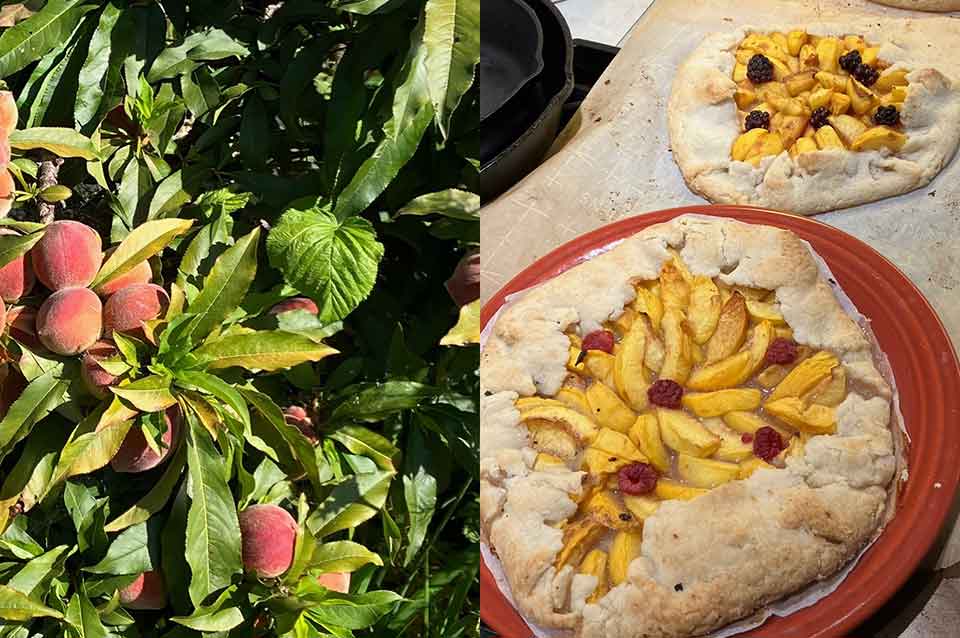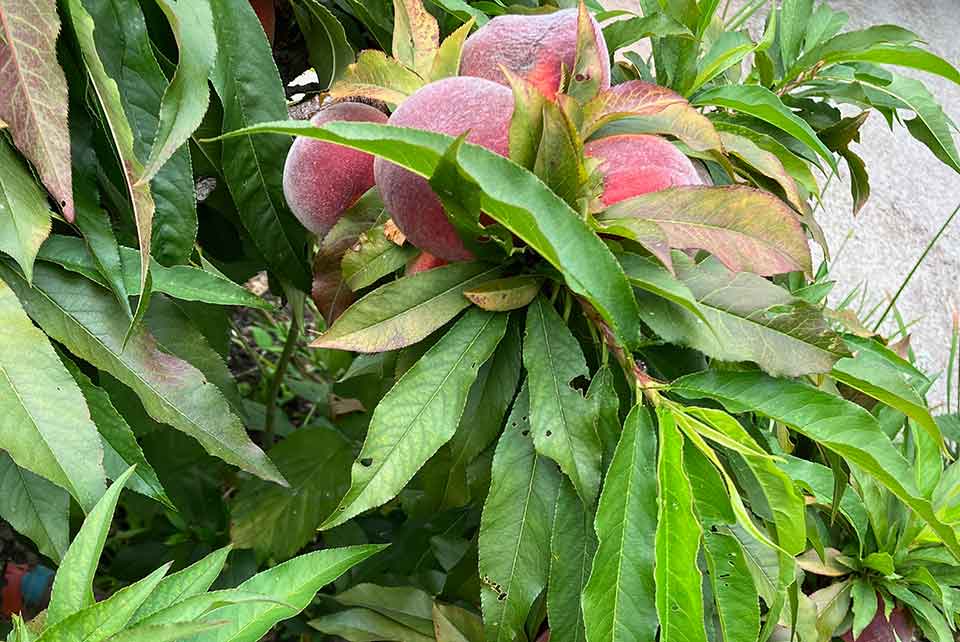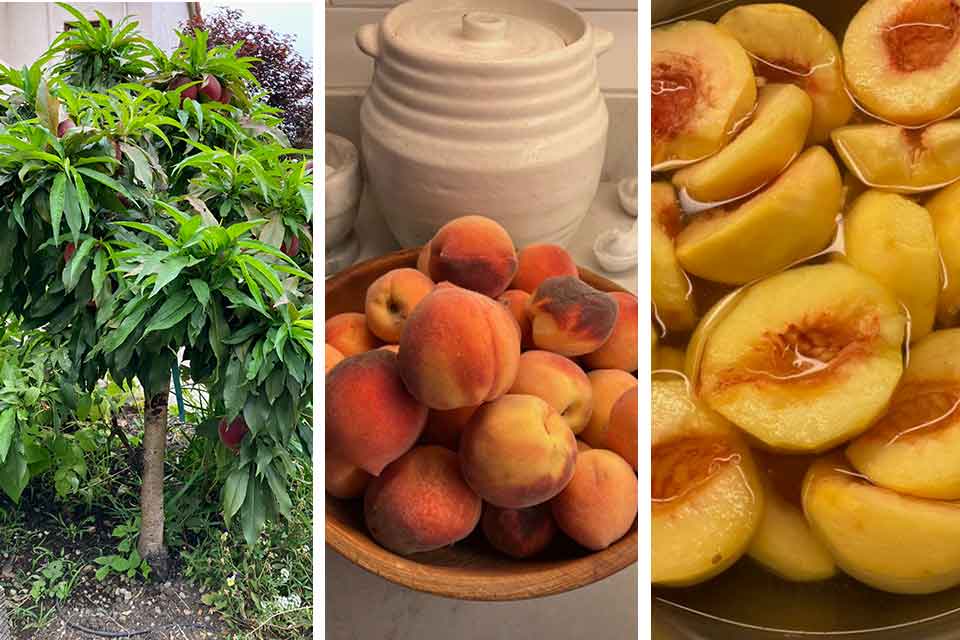A Growing Inclination
 In this remembrance with a recipe, a writer in California traces her inclination for growing back through her father and his father, a retired baker and confectioner from Syria.
In this remembrance with a recipe, a writer in California traces her inclination for growing back through her father and his father, a retired baker and confectioner from Syria.
The San Francisco Bay Area is known for its Mediterranean climate, but locally, the weather is defined by microclimates. On a given hillside, redwoods grow where fog blows in from the bay, while downslope the meadow grass turns brittle in the summer heat. I live along the hills in the suburbs of the East Bay where the weather is defined by proximity to the mountains or the bay, and can vary between neighborhoods. The area is famously populated with banana belts, pockets of warm weather ideal for growing food, and the streets here were once agricultural tracts—avocado, citrus, and cherry orchards.
On a typical summer day, temperatures can range from sixty degrees along the ocean to ninety degrees or more at inland locations like Walnut Creek and Sacramento. San Francisco is famously cool in the summer. With the ocean to the north, east, and west of the peninsula, temperatures rarely rise above those of the water. I recall, when I was in art school, my father came to visit and was stunned by the cold summer fog. We’d lived in Los Angeles, a place my father had left due to the smog and traffic, and by then I’d acclimated to frigid SF summers, but I recall my father in a thick Irish sweater walking up Steiner Street, and his disbelief that this was summer in Northern California.

I recall my father in a thick Irish sweater walking up Steiner Street, and his disbelief that this was summer in Northern California.
My father was a no-nonsense gardener with a natural instinct for growing. In Los Angeles, we lived near the Angeles Crest Mountains at the top of a wooded canyon, and in that high desert climate my father dug a terraced garden into the hard clay hillside. He shored the incline with railroad ties, amended the soil, and planted succulents along its tiers. One year he grew chrysanthemums like rows of corn, training his favorite flower to grow tall and leggy by pinching away buds until the stems were topped with globe-shaped blooms.
My father’s inclination for growing was passed down from his father, an immigrant from Syria who came to Los Angeles via Brooklyn after retiring from lifelong work as a baker and confectioner. The story goes that in 1950, when my grandfather took a train west to buy a house in Los Angeles, he’d been told that with the mountains and warm weather, southern California was “just like Damascus,” and the house he found, in Altadena, an enclave in the highlands northeast of downtown, reminded him of the houses he’d known in Syria. There were grassy tracks front and back, grape vines, lemon, fig, apricot, and kumquat trees, and a rose garden he tended over the next twenty years of his life. From my time in that house, I grew up knowing you could pluck fresh grape leaves to brine, pick a warm fig or apricot and eat it beneath the tree, and that a warm Los Angeles night carries the scent of jasmine and lemon flowers.
I grew up knowing you could pluck fresh grape leaves to brine, pick a warm fig or apricot and eat it beneath the tree, and that a warm Los Angeles night carries the scent of jasmine and lemon flowers.
My father and grandfather are gone, but both were on my mind when I planted my garden. There’s little space on our one-third acre lot, but the front has good exposure, and the stucco of our Spanish-style house absorbs and reflects the sun, raising the temperature for the tomatoes. Tucked along the sidewalk, there’s a trio of blueberry bushes, a variety tolerant of the California climate that grows more bountiful each year.
There’s also a dwarf peach tree I planted for my daughter when she was small. She loved the idea of eating peaches off a tree. As a toddler, she’d stand at the trellised cherry tomatoes and pick the vines nearly clean as she popped tomatoes in her mouth. So sweet! she’d say. The peach tree took a few years to bear, but over time, as I carefully fertilized, dug in compost, and pinched away excess leaves, the peaches appeared. The tree is less than four feet tall, and in spring it’s a beautiful sight. By February or March, the gnarly little branches are covered in pink blooms, and in summer, the fruit is nestled in thick foliage.
Last summer was the tree’s best yield yet with enough peaches for pie, peach salsa (excellent with red onion and poblano chiles), and peach halves canned the easy way—refrigerated in mason jars. I should keep a count of the yearly harvest, but I’ve never been a grower who tracks the season’s weather, plantings, and yields. Instead, pictures taken on my phone make for a visual record throughout the year—the cycles of pruning, pinching off leaves, and waiting until the blossoms appear again.
My father died before I married and moved to this spot between the bay and the hills, so he never saw the garden—the peach tree or the corn I planted one year in the raised beds, or the plot of za’atar oregano, sage, and mint. And while my father grew up the son of a confectioner, he didn’t have much of a sweet tooth, but I think he would have loved my peach galette, an easier form of the traditional pie. He’d appreciate its simplicity, the humble presentation, and of course, the peaches that come from a tree that’s small but produces a summer’s worth of fruit.

Recipe for a Peach Galette
1. Prepare your favorite pie crust and chill for at least 2 hours.
2. Roll out on baking parchment to at least 14 inches in diameter.
3. Brush with melted butter and sprinkle with sugar.
4. Peel and quarter enough peaches to arrange in circles from the center out, leaving a 3-inch border.
5. Sprinkle the fruit with about 3–5 tablespoons of sugar, depending on the sweetness of the peaches.
6. Fold over the edges and brush with melted butter, then sprinkle with sugar.
7. With the galette still on the parchment, transfer it to a baking sheet and bake for 30–40 minutes at 400 degrees, or until the fruit is soft and the crust is browned.
8. Serve warm with vanilla ice cream.








